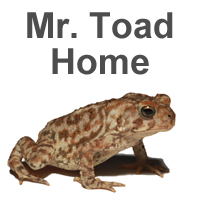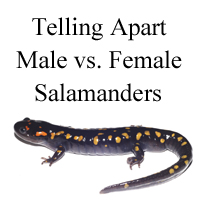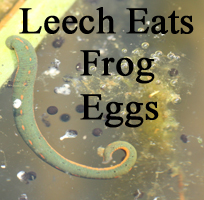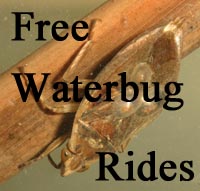|
|||||

| |||||
|
Predaceous diving beetles (Dytiscus sp.) are large insects that spend most of their lives in bodies of water such as ponds. They are voracious predators, eating amphibians and other insects. The photograph above shows a diving beetle larvae eating a pacific chorus frog (Pseudacris regilla) tadpole. Other predators of pacific chorus frog tadpoles include giant water bugs and garter snakes.
Pacific chorus frog tadpoles have various adaptations that improve their survival when facing different types of predators. For example, pacific treefrog tadpoles develop enlarged tails when they smell predaceous diving beetles; these enlarged tails serve as a lure to distract strikes from the body of the tadpole toward the tail (Benard 2006 Ecology). However, when tadpoles smell bluegill, they develop a shape that improves their swimming speed: shallow tails and deep tail muscles. These distinct responses to each type of predator represent adaptations to each predator's foraging strategy. Beetles are sit-and-wait predators, while fish can chase their prey for short distances.
|
|||||
| |||||
| Tweet |
| ||||||||||||









